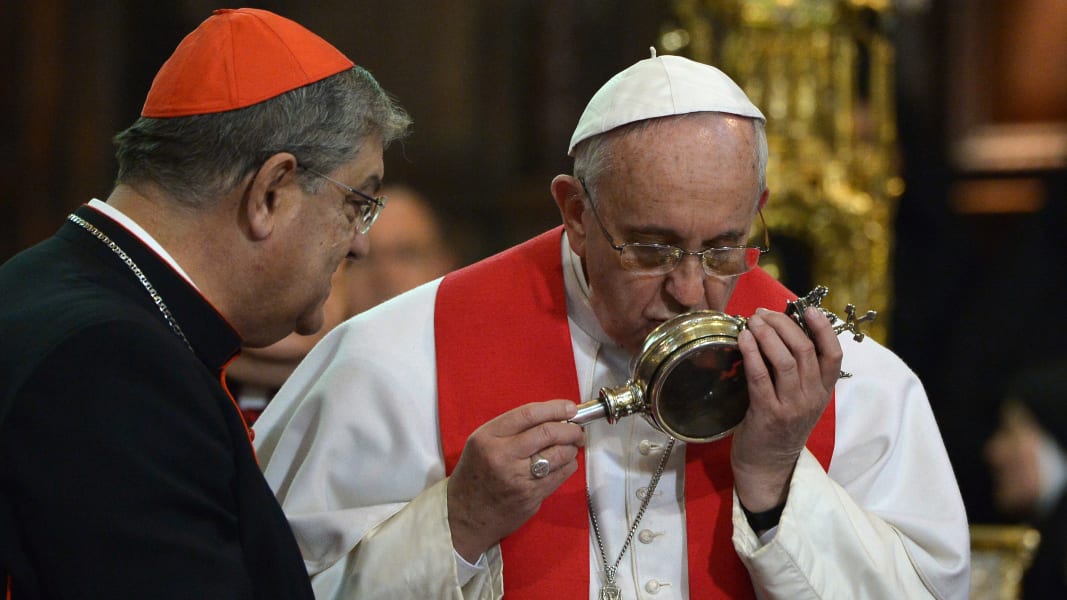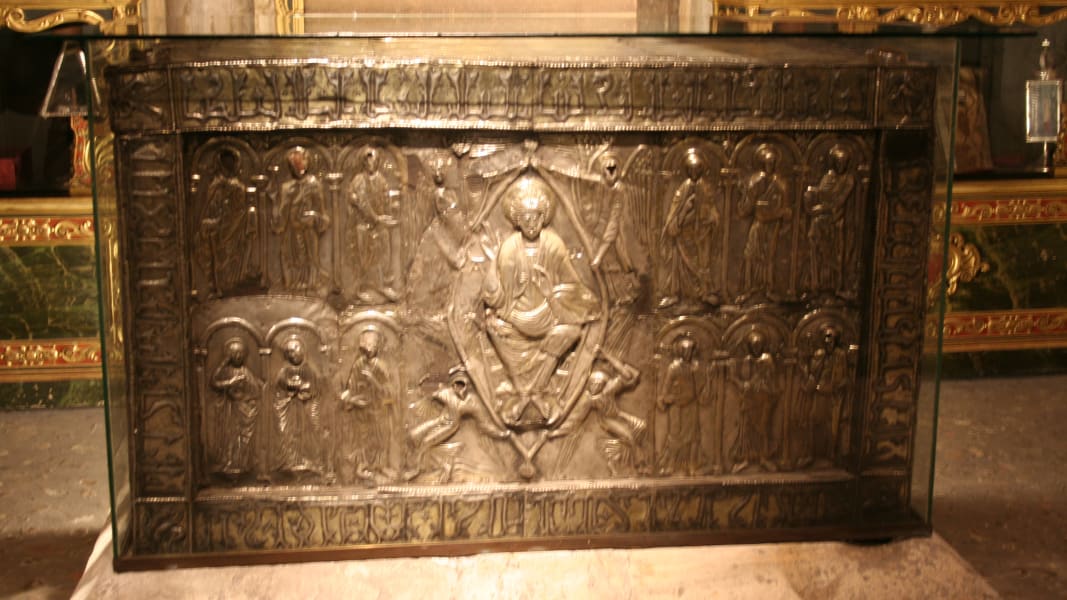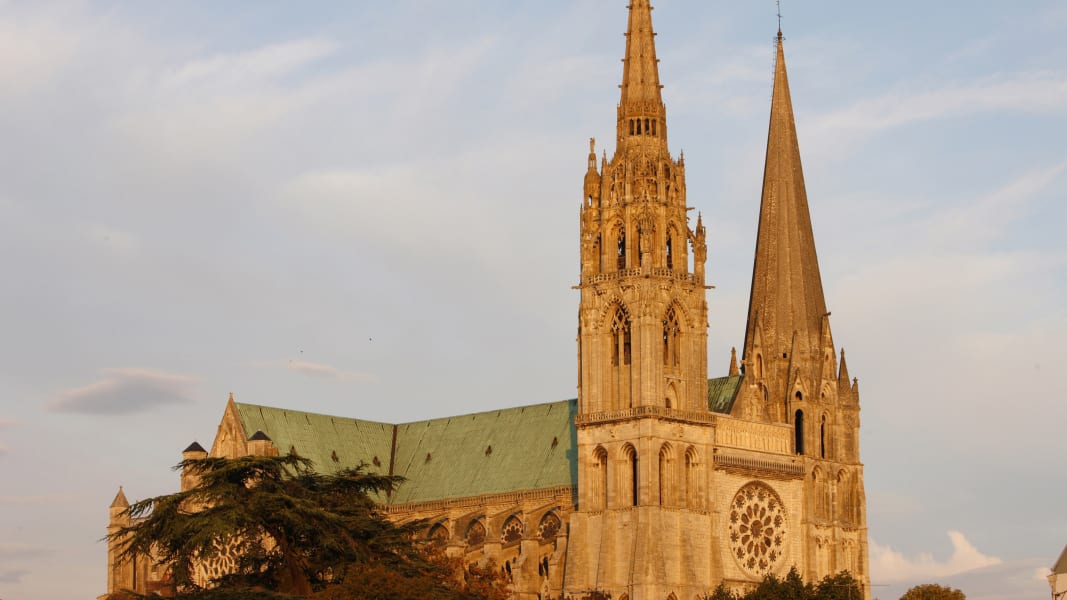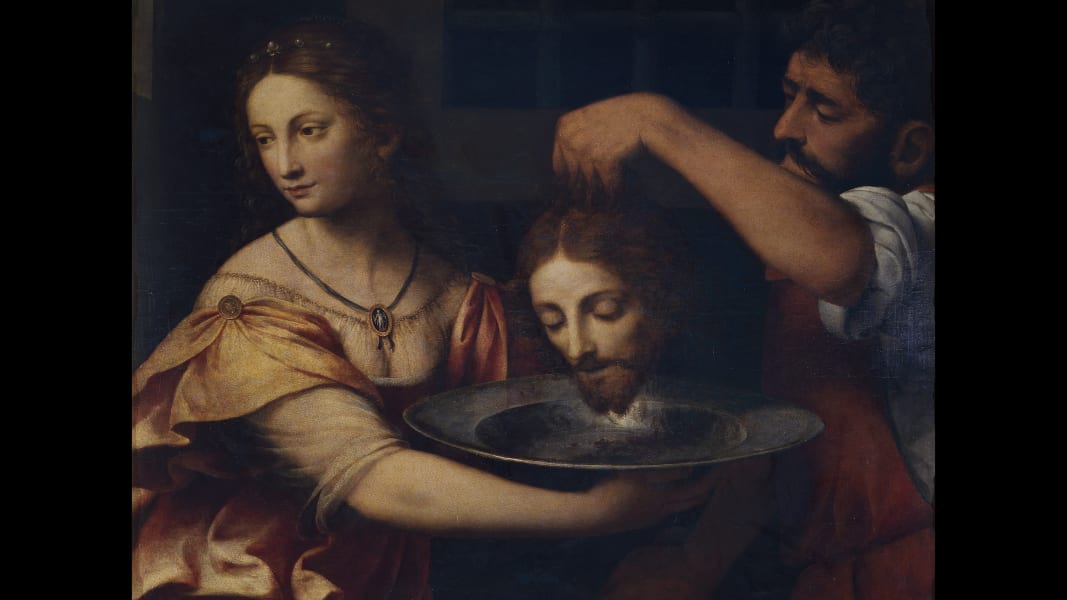World
Christianity's relics: The revered, the morbid and the bizarre
Updated 2112 GMT (0512 HKT) March 6, 2017
Share


1 of 12
The vessel held here by Pope Francis is said to contain the dried blood of Saint Januarius. The vial is kept in Italy's Naples Cathedral. It's brought out three times a year for prayer ceremonies, during which it is said to liquefy. However, the blood doesn't always assume its liquid state -- as was the case on December 16, 2016. According to legend, that could foreshadow disaster in the coming year. To learn more about the evidence behind Christian relics, artifacts and the historical Jesus, watch CNN's original series "Finding Jesus," Sunday nights at 9 ET/PT. ALBERTO PIZZOLI/AFP/Getty Images
Saint Anthony, often invoked by Catholics when they've lost something, is buried at the Basilica of Saint Anthony in Padua, Italy. The church also houses a large reliquary containing his tongue. According to church legend, when Saint Anthony's body was exhumed years after his death, most of his body had turned to dust. His tongue, however, is said to have appeared moist and alive. DeAgostini/Getty Images
Pope Francis holds a box -- found in a tomb beneath Saint Peter's Basilica in Vatican City -- which the Catholic Church claims contains the bones of Saint Peter. The relics were first discovered in the 1940s, but Pope Francis put them on display to the public for the first time in 2013. VINCENZO PINTO/AFP/Getty Images
Over the years, countless supposed fragments of the cross on which Jesus was crucified have turned up. Historians say the spread of these relics can be traced to Saint Helena, the mother of Emperor Constantine, the first Roman emperor to convert to Christianity. Helena traveled to Jerusalem and while there, excavators working for her discovered three crosses buried beneath a temple. It's claimed that, through a miraculous revelation, Helena was able to discern which of the crosses was the "true cross." She left one piece of it in Jerusalem and took the rest to Europe. Sedmak/iStockphoto/Getty Images
Saint Catherine of Siena was known for her miraculous visions and her work helping the sick and poor. Today visitors to the city can see a slightly macabre memorial to her. More than 600 years after her death, Saint Catherine's head remains on display at the Basilica of San Domenico. DeAgostini/Getty Images
The shroud is believed by many Christians to be the burial shroud of Jesus -- but science suggests otherwise. Carbon dating indicates it dates to the 13th or 14th century. The cloth is regarded by the scientifically minded as a medieval forgery. Marco Destefanis/Pacific Press/LightRocket/Getty Images
Legend has it that as Jesus was being led to the hill where he was crucified, Saint Veronica encountered him. She used a cloth to wipe the sweat and blood from his face, and the veil was supposedly imprinted with his image. The existence of the veil has never been proven or disproven -- but there are a number of copies and purported originals scattered across Europe. TIZIANA FABI/AFP/Getty Images
According to the Bible, a crown of thorns was placed on Jesus' head before his crucifixion. Today a number of relics of the crown are venerated by Christians. The one pictured above is held in Paris' Notre Dame Cathedral. Godong/Universal Images Group/Getty Images
According to the Gospel of John, a Roman soldier pierced Jesus' side with a spear during his crucifixion. A number of relics purporting to be the tip of this "Holy Lance" have surfaced throughout history. Also known as the "Spear of Destiny" and supposedly bestowing supernatural powers on its owner, there are at least three relics at different locations that claim to be part of the original. Vincenzo Fontana/Corbis Historical/Getty Images
Meaning "sweat cloth" in Latin, the Sudarium of Oviedo is a bloodstained piece of cloth that was allegedly used to wrap the head of Jesus after his crucifixion. Today, the relic is kept in a chest in the Cathedral of San Salvador in Oviedo, Spain. Sitomon
Chartres is home to one of Europe's most stunning Gothic cathedrals. The church also houses one of Christianity's most venerated relics --The Sancta Camisia. The tunic is said to have been worn by the Virgin Mary during Jesus' birth. Godong/Universal Images/Getty Images
According to the Bible, Herod Antipas ordered John the Baptist's beheading after his step-daughter, Salome, requested it be presented to her on a platter. But what became of John's head? Some claim it's held at the Basilica of Saint Sylvester the First in Rome. Other traditions place it in France or the Middle East. Fine Art Images/Heritage Images/Getty Images



















